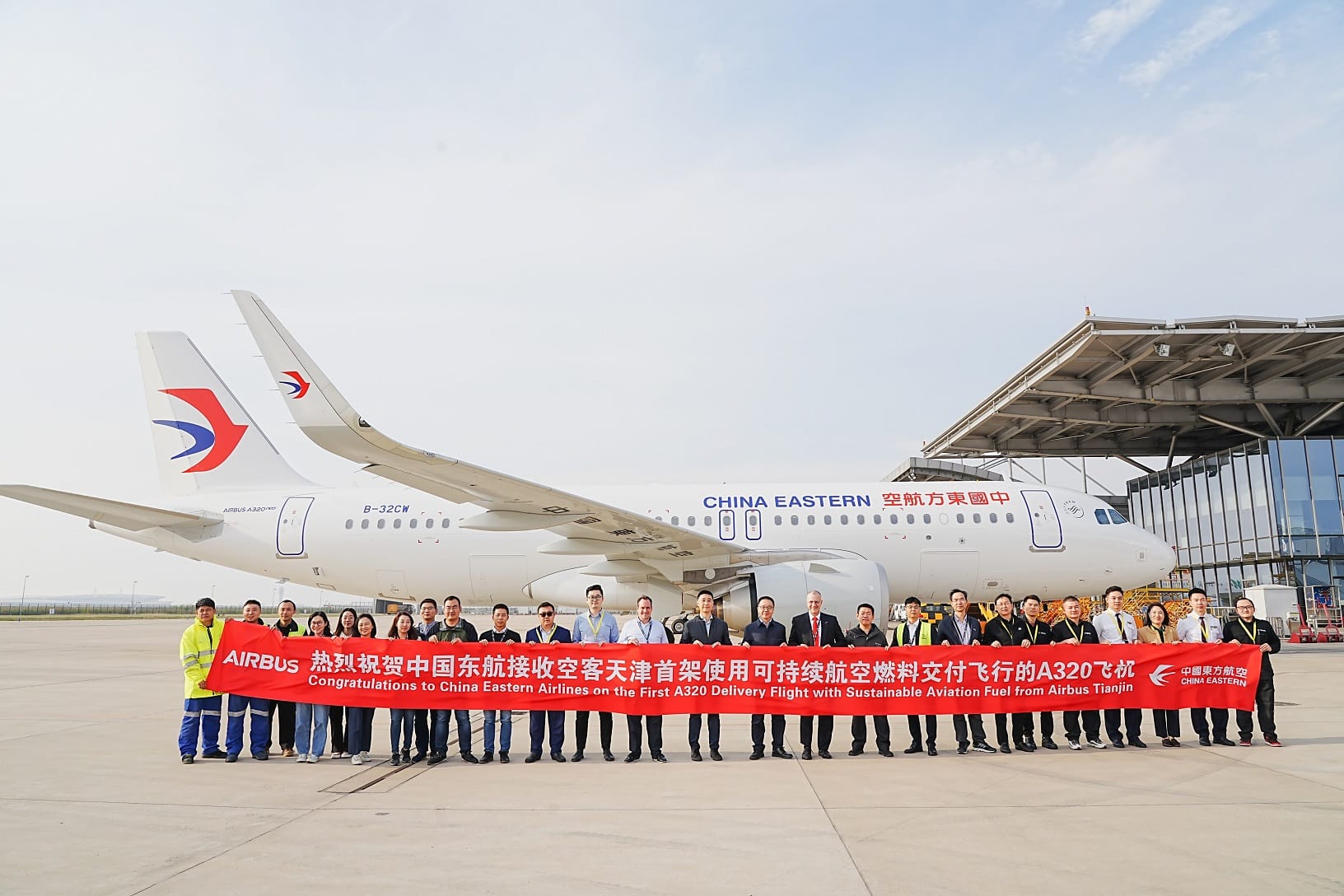Aerospace
Airbus and partners embark on SAF deliveries in China
Airbus has opened a new sustainable aviation chapter in China as an A320neo for China Eastern Airlines

Airbus has opened a new sustainable aviation chapter in China as an A320neo for China Eastern Airlines – the first time powered by a five percent Sustainable Aviation Fuel (SAF) fuel blend – took off from its Airbus Delivery Centre in Tianjin.
SAF is a sustainably-produced aviation fuel made from feedstocks ranging from used fat, oil, and grease to municipal and forestry waste. Compared to fossil jet fuel, SAF has been demonstrated to result in an up to 80% reduction in CO2 emissions across the entire SAF lifecycle. Therefore, it is considered a key enabler contributing to the decarbonization of aviation.
Qantas and Airbus Partnership for the biofuel industry.(Opens in a new browser tab)
The SAF for the delivery flights in China is produced locally from used cooking oil by SINOPEC Zhenhai Refining & Chemical Company, a state-owned manufacturer in China. It is the first batch of Chinese SAF made by the only certified Chinese facility.
“The first SAF delivery flight of Airbus aircraft in Tianjin marks a historic milestone for Airbus and particularly for us in China,” said George XU, Airbus EVP & Airbus China CEO. “It is a great step towards our vision of contributing to sustainable aviation as a long-term reliable partner in China. Thanks to the joint effort and the consensus on sustainability between us and our partners, we will be able to offer such sustainable solutions to all customers taking delivery from our Tianjin facilities. Going forward, we also aim to partner with more Airbus operators in China to fly commercially with SAF to further support the green aviation strategy in China.”
Currently, all Airbus commercial aircraft are capable of flying with an up to 50 percent SAF blend mixed with kerosene and are targeted to be capable of 100 percent SAF use in flight by the end of this decade. Since March 2021, Airbus has successfully accomplished 100 percent SAF test flights on A319neo, A350 and A380 aircraft.

Aerospace
Boeing Transfers Rocket Stage to NASA, Paving Way for Human Moon Mission

Boeing has achieved a significant milestone by providing NASA with the second core stage of the Space Launch System (SLS) rocket.
This crucial component, crafted at NASA’s Michoud Assembly Facility (MAF), is set to propel the Artemis II crew into lunar orbit, marking humanity’s return to deep space after a 50-year hiatus.
The monumental Boeing-built rocket stage, the largest element of the Artemis II mission, will embark on a journey aboard the Pegasus barge, traveling 900 miles to NASA’s Kennedy Space Center.
Comparison of two legendary aircraft B777x vs B747 aircraft:Click here
Upon arrival, it will be meticulously integrated with other essential Artemis II components, including the upper stage, solid rocket boosters, and NASA’s Orion spacecraft within the iconic Vehicle Assembly Building. This intricate integration process is a vital step toward the eagerly anticipated Artemis II launch, slated for 2025.
“Boeing-built products helped land humankind on the moon in 1969, and we’re proud to continue that legacy through the Artemis generation,” remarked Dave Dutcher, vice president and program manager for Boeing’s SLS program. “Together, with NASA and our industry partners and suppliers, we are building the world’s most capable rocket and paving the way to deep space through America’s rocket factory in New Orleans.”
NASA, Lockheed Martin Reveal X-59 Quiet Supersonic Aircraft:Click here
The delivery of Core Stage 2 marks a significant achievement in the evolution of the SLS rocket. Towering over 200 feet and powered by four RS-25 engines, this core stage, coupled with two solid-fueled booster rockets, will generate a staggering 8.8 million pounds of thrust. This immense power is crucial to launching Artemis II and future missions into the vast expanse of space.
The SLS rocket stands unparalleled in its capability to transport both crew and substantial cargo to the moon and beyond in a single launch. Its extraordinary capacity will facilitate the delivery of human-rated spacecraft, habitats, and scientific missions to destinations including the moon and Mars, ushering in a new era of space exploration.
-

 Travel1 week ago
Travel1 week agoAir India to Expand US Operations with Three New Routes After a Decade
-

 Travel2 weeks ago
Travel2 weeks agoWhy We Should Avoid These Stamps in a Passport
-

 Airlines1 month ago
Airlines1 month agoInvestigations Reveal Fake Chinese Titanium in Boeing and Airbus Jets
-

 Tech4 weeks ago
Tech4 weeks agoChina’s CATL Plans 1,800-Mile Electric Plane Launch by 2027
-

 Airport3 days ago
Airport3 days agoTop 10 Largest Airports in the World by Size
-

 Aerospace4 weeks ago
Aerospace4 weeks agoChina’s Fighter Jets Turn Wings into Autonomous Drones
-

 Airlines4 days ago
Airlines4 days agoAir India Rolls Out A350s for Delhi-New York JFK and Newark Routes
-

 Defence3 weeks ago
Defence3 weeks agoBoeing Enhances Chinook with New Engines and Block II Upgrades at $96 Million







